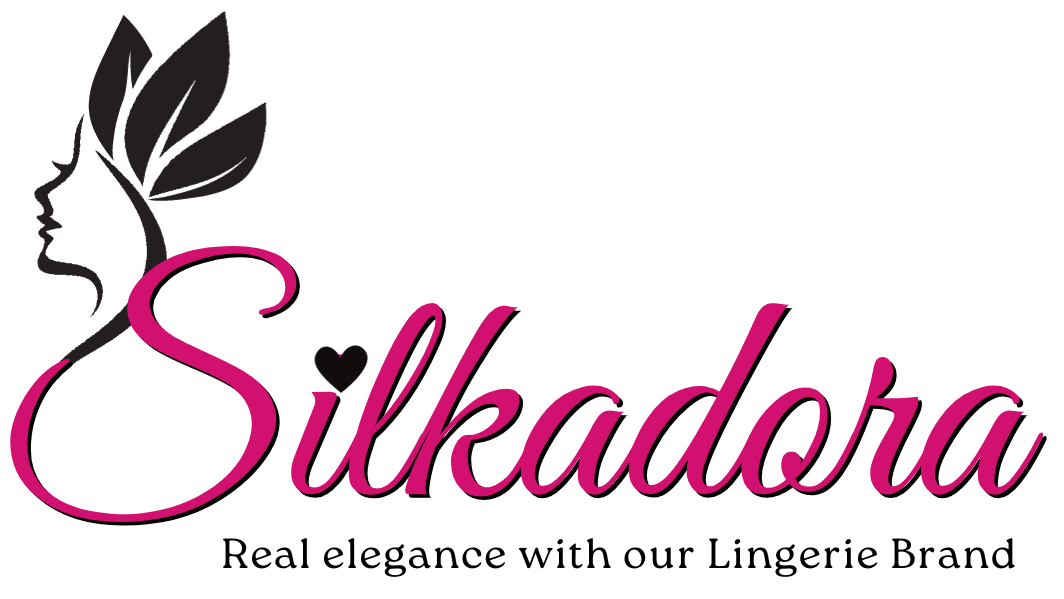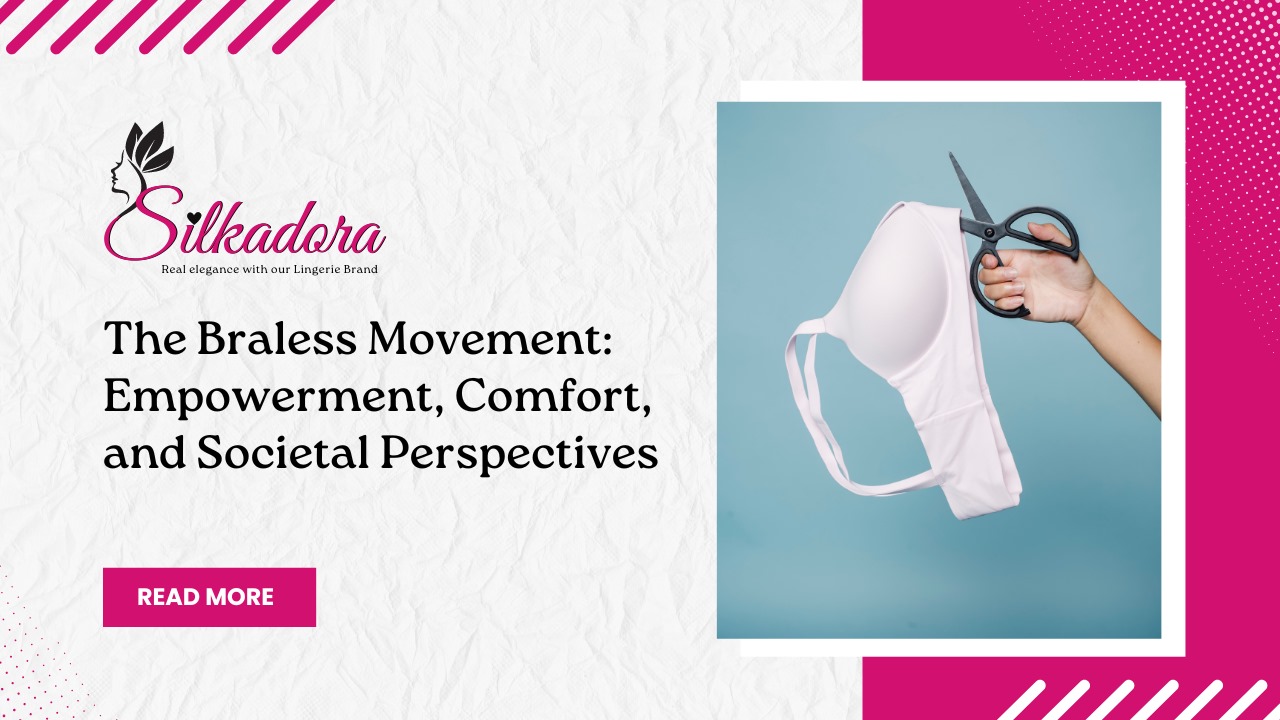Introduction to the Braless Movement
Welcome to the liberating world of the Braless Movement! Imagine a life free from underwires, clasps, and straps – where comfort meets empowerment in an unapologetically bold way. Today, we delve into the history, benefits, and societal perspectives surrounding going braless. So sit back, relax (no need for a bra!), and let’s explore this empowering journey together!
History of Bras and How They Have Evolved
The history of bras dates back centuries, with early forms consisting of simple garments to provide support. In the late 19th century, corsets evolved into more structured brassieres designed for comfort and functionality. The 1920s saw the emergence of the modern bra as we know it today, offering various styles to suit different needs.
During World War II, bras became more utilitarian due to fabric shortages and rationing. The feminist movement in the 1960s challenged traditional undergarments, leading to a shift towards more comfortable and natural designs. Over time, bras have continued to evolve in terms of materials, construction techniques, and inclusivity in sizing.
Today, there is a growing trend towards embracing bralessness as a form of empowerment and self-expression. This shift reflects changing attitudes towards beauty standards and societal norms surrounding women’s bodies.
Early Forms of Support
Before the invention of bras, women in ancient civilizations used various methods to support their breasts. In ancient Greece, women would wear a strophium or mastodeton, a band of cloth that wrapped around the chest and tied behind the back. In ancient Rome, women wore a similar garment called a mamillare.
During the Middle Ages, there was no concept of supporting the breasts, and women would often bind their chests with strips of linen or fabric for modesty. This practice continued into the 16th century when corsets became popular for shaping and supporting the torso.
The Evolution of Corsets
Corsets were first introduced in France in the 16th century as an undergarment to shape and support the torso. They were made from stiffened fabric or leather and laced tightly to create an hourglass figure. During this time, corsets were primarily worn by aristocratic women as a sign of wealth and status.
By the 19th century, corsets became more widespread among all social classes. They were designed with metal boning to provide more structure and support. However, these corsets were extremely uncomfortable and could cause health issues such as difficulty breathing and organ damage.
Innovations in Brassieres
In the late 19th century, a French dressmaker named Herminie Cadolle designed one of the earliest forms of bras. She created a corset with fabric cups sewn in, known as the “Bien-être” (meaning well-being) bra. This design allowed for more freedom of movement and comfort compared to traditional corsets.
In 1914, Mary Phelps Jacob patented the first modern bra made from two handkerchiefs and a ribbon. This design, known as the “backless brassiere,” offered more support and was more comfortable than corsets.
The Modern Bra Emerges
The 1920s saw significant changes in women’s fashion, with shorter hemlines and lower waistlines becoming popular. This new style called for undergarments that were less constricting than corsets. As a result, the modern bra was born.
In 1922, Ida Rosenthal and Enid Bissett founded Maidenform, a company specializing in bras for different body types. They introduced cup sizes A, B, C, and D to accommodate various breast sizes.
During World War II, fabric shortages led to more practical and utilitarian designs for bras. The “bullet bra,” which featured pointed cups, became popular during this time.
1960s Onwards: Comfort and Self-Expression
The feminist movement in the 1960s challenged traditional undergarments and encouraged women to reject restrictive clothing. As a result, bras became more comfortable and natural-looking, with less padding and structure.
In the 1970s and 1980s, sports bras were introduced for women participating in physical activities. These bras provided more support and comfort during exercise.
In recent years, there has been a push towards inclusivity in bra sizing, with brands offering a wider range of sizes to cater to different body types. There has also been a growing trend towards embracing bralessness as a form of empowerment and self-expression.
In Conclusion
From ancient civilizations using cloth bands to modern bras designed for comfort and support, the history of bras has evolved significantly over time. Today, bras come in various styles and designs to suit different needs and preferences. Whether it’s for practical purposes or as a fashion statement, the evolution of bras continues to reflect changing attitudes towards beauty standards and societal norms surrounding women’s bodies..
Benefits of Going Braless
Are you tired of the restrictive feeling of bras? Going braless can bring a sense of freedom and comfort that many women find liberating. Without the constraints of underwire or straps, your body can move more naturally throughout the day.
One benefit of going braless is improved circulation. By allowing your chest to breathe without tight bands constricting blood flow, you may experience better overall circulation and less discomfort. Additionally, some women find that going bra-free helps alleviate shoulder and back pain associated with traditional bras.
Moreover, embracing the braless movement can boost body confidence. Accepting your natural shape and learning to love your body as it is can be empowering. It’s all about embracing what makes you feel comfortable and confident in your own skin.
So, if you’re looking for a way to feel more at ease in your daily routine while also promoting a positive body image, consider giving the braless lifestyle a try!
Empowerment and Body Positivity in the Braless Movement
The Braless Movement goes beyond just skipping a bra – it’s a statement of empowerment and body positivity. By embracing our natural bodies, we challenge societal norms that dictate how women should look or dress. Going braless allows us to feel more connected to ourselves and confident in our own skin.
It’s about reclaiming autonomy over our bodies and rejecting the idea that our worth is tied to conforming to certain standards of beauty. Embracing bralessness is a way of saying, “This is me, take it or leave it.” It’s liberating to break free from the constraints of underwire and padding, opting for comfort over conformity.
Body positivity in the Braless Movement encourages self-acceptance regardless of size or shape. It promotes the idea that all bodies are beautiful and deserving of love and respect. Through this movement, we celebrate diversity and reject unrealistic ideals perpetuated by mainstream media.
The Braless Movement also promotes self-love and self-care. By ditching uncomfortable bras, we prioritize our own comfort and well-being. This can have a positive impact on our mental health as well, as it allows us to focus on what truly matters instead of constantly worrying about how others perceive us.
Furthermore, the Braless Movement seeks to break down the sexualization of women’s bodies. The idea that women must wear a bra to appear more attractive or desirable is harmful and perpetuates the objectification of women. Going braless challenges this notion by showing that our bodies are not meant for the pleasure of others – they are our own.
In essence, the Braless Movement is about embracing ourselves fully – mind, body, and soul. It encourages us to love and appreciate ourselves for who we are, rather than striving for an unattainable societal ideal. By challenging traditional beauty standards and promoting self-love and empowerment, the Braless Movement is making strides towards a more inclusive and accepting society.
Social Stigmas and Stereotypes Surrounding Bralessness
The decision to go braless has often been met with societal stigmas and stereotypes. Some believe that not wearing a bra is unprofessional or inappropriate, associating it with being unkempt or indecent. There is a misconception that going braless is solely for attention-seeking purposes, when in reality, many women choose this for comfort and personal preference.
Women are sometimes judged based on whether they wear a bra or not, as if their undergarment choice defines their worth or morality. This scrutiny can create unnecessary pressure and insecurity for those considering going without a bra. Despite these challenges, the Braless Movement aims to challenge these outdated perceptions and empower individuals to embrace their bodies as they see fit.
By shedding light on the social stigmas surrounding bralessness, we can work towards creating a more accepting and inclusive society where individuals feel comfortable making choices that align with their own sense of empowerment and self-expression.
Tips for Going Braless and Feeling Confident
When transitioning to a braless lifestyle, start by experimenting in the comfort of your own home. Try going braless for short periods to get used to the feeling and gradually increase the time as you feel more at ease.
Choose clothing that provides support or camouflage if needed. Flowy tops, layered outfits, or garments with built-in support can help you feel secure and confident while going without a bra.
Consider wearing nipple covers or petals for added discretion under thin fabrics or when you want extra coverage. These small accessories can provide peace of mind and enhance your comfort level.
Stay mindful of your posture – standing tall with shoulders back not only improves how you look but also boosts your confidence when going braless. Good posture can make all the difference in how you carry yourself without a bra.
Confidence is key! Remember that embracing the braless movement is about feeling comfortable in your own skin. Rocking your natural shape with confidence will radiate empowerment and self-assurance wherever you go.
Conclusion: Joining the Braless Movement – A Personal Choice
Whether or not to embrace the braless lifestyle is a personal decision that varies from individual to individual. The movement represents empowerment, comfort, and challenging societal norms about beauty standards. It’s about feeling confident in your skin and embracing your natural self.
By understanding the history of bras, recognizing the benefits of going braless, and overcoming social stigmas, you can make an informed choice that aligns with your values and beliefs. Remember, it’s all about what makes you feel comfortable and empowered.
So if you’re considering joining the braless movement or simply exploring the idea of going without a bra more often, know that it’s entirely up to you. Embrace your body, celebrate your uniqueness, and choose what feels right for you personally. Whether wearing a bra or not – be proud of who you are!










